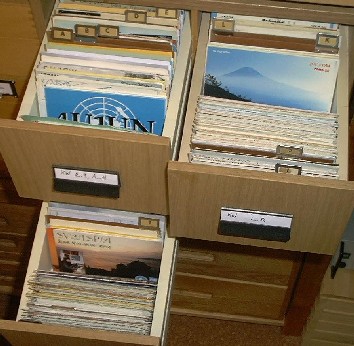
Radio amateurs carry on the tradition of using a QSL card as a confirmation of a contact with another amateur radio station. They say “a QSL is the final courtesy of a QSO” (2-way-connection). The QSL card contains some basic information – the station’s callsign, location, licensee’s name and postal address and often details about the equipment like transmitter, power, antennas, etc. It also includes details of the contact, the date, the time (usually in UTC), the radio frequency, the mode of transmission used and a signal report. Sometimes the QSL card shows a picture of the radio amateur’s shack or home town.
I collect QSL cards and am happy about every card I receive. Of course I confirm every initial QSO with my QSL-card via the QSL-bureau, as far as I have no information that no “paper-QSL” is desired. In addition, my log is uploaded mostly the same day to the “logbook of the world” (LoTW). The LoTW is a repository of logs, submitted by radio amateurs around the world. The diagram below shows a daily updated statistic of my QSOs and QSLs.
Oops…
I used the GlobalQSL-service to print and distribute my QSL cards, which worked well for many years. My last upload to this service took place in July 2021. Shortly thereafter the GlobalQSL website went offline. According to information from other radio amateurs, GlobalQSL had not printed and sent out QSL cards possibly since 2020, although prepaid credit was available and uploads of the log data were always confirmed (“…cards will be printed soon”). No one responsible for GlobalQSL could be reached, so it was not possible to find out until when this service really had delivered QSLs. Radio amateurs who are still waiting for my QSL card should send me an email (georg(at)dl5no.de) with the QSO-data so that I can get the QSL on the road again.

